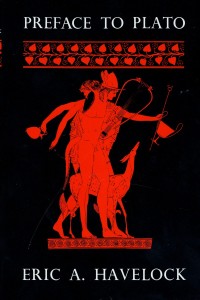Advanced Calculus I
“The point of calculus is to understand how and when we can approximate non-linear transformations with linear ones.”
Text: Calculus: Several Variables by Robert Adams
Prof: Dr Julia Gordon
Dr Gordon is a really kind and gentle prof. Her classes focused on explaining the intuitive motivations for various theorems or algorithms. The classes did seem to get bogged down with administrative concerns. Since this was the first time she taught the course, she made a lot small errors, but not more than your average prof. However, she did get rather thrown-off by her errors and this, along with administrative concerns, probably slowed the class to the extent that we had to rush a bit towards the end of term. While her midterms were similar in difficulty to practice midterms, her homework was a great deal easier then what we have come to expect in honours. She generally explained the intuition behind theorems, but omitted proofs because she felt that the definitions we were using were not efficient/well-suited for proving those theorems. She is very helpful during office hours, but I don’t think she approves of too much hand-holding in an honours class, even though she will help you a lot if you ask for it. I also get the sense that her life is very busy!
Some quips:
“Please don’t cheat. In Russia, they never took it very seriously, but for some reason they take it very seriously here.”
“I sense some unrest in the class…”
“I haven’t taught you improper integrals, but you can extrapolate from you understanding of proper integrals.”
“Does everyone believe that this is an honest approximation to the function? Good”
“WAIT!! WAIT!! Before you pack up, let me deliver the punchline!”
“At some point in your mathematical career, you will have to solve a 100 difficult integrals. Here they are.”
“The Fundamental Theorem of Calculus is : ‘Never differentiate in public’. I am now going to ignore that rule.”
Difficulty
I have found this course the easiest honours Math course I have taken at UBC. However, people who are new to honours Math were slightly overwhelmed by a combination of n-dimensional space, epsilon-delta and the scarcity of example-based learning, all of which were prevalent in first year honours calculus. The workload was very manageable, with Webwork and a short written assignment due in two weeks. Scaling was generous, because people did poorly on the midterms. This was partly because of the people that were new to honours Math but also because the homework did not challenge us to demonstrate deep understanding of all the necessary concepts, which comes in handy on honours Math midterms, where conceptual understanding often trumps computation.
Key Concepts
N-dimensional intervals/balls (topology), limits (epsilon-delta), differentiability and continuity
Partial derivative of N-dimensional curve
N-dimensional derivative (Gradient and Jacobian Matrix)
Integration over N-dimensional space
N-dimensional optimization (Lagrange)
Hard Concepts
Implicit Function Theorem: Found explanation in book confusing. Found it easier to think in terms of Jacobian Matrix.
Lagrange: Computationally difficult, have to solve non-linear system of equations.
Topology: Found it difficult to do proofs under time pressure.
Change of variables using Jacobian: Make sure not to get confused between image and source.
Geometry: Have fun visualizing N-dimensional intersections of various curves 🙂
Conclusion
Good class. It was nice to understand calculus from a linear transformation perspective. Felt that my understanding of key theorems of the class is still sketchy though, and that the end of the class was rushed.

 Follow
Follow